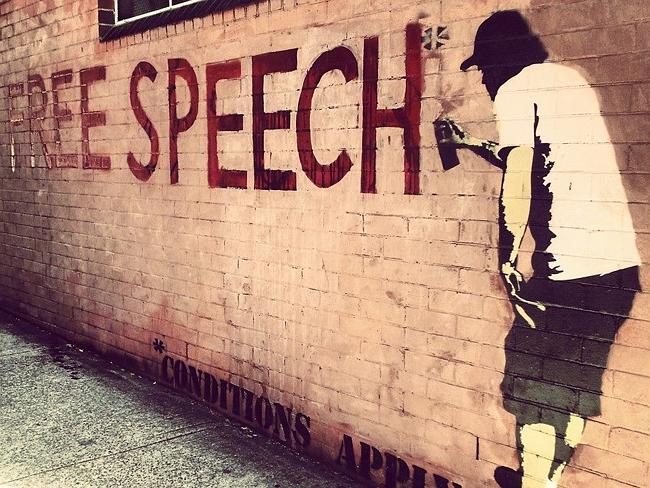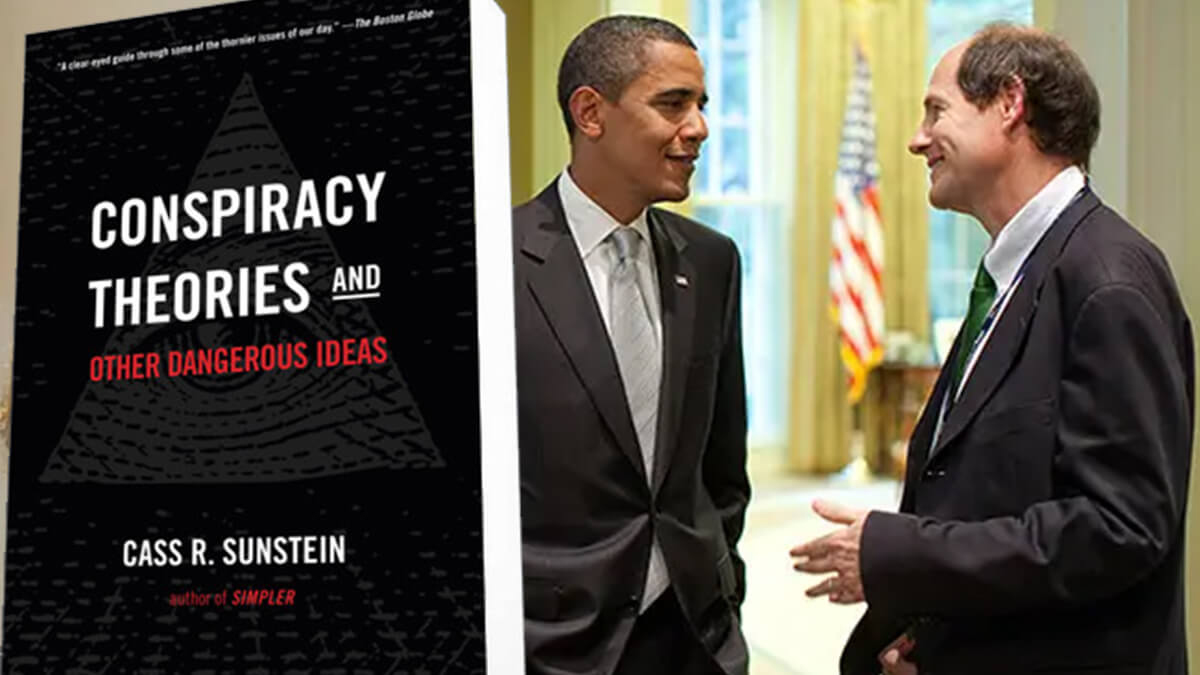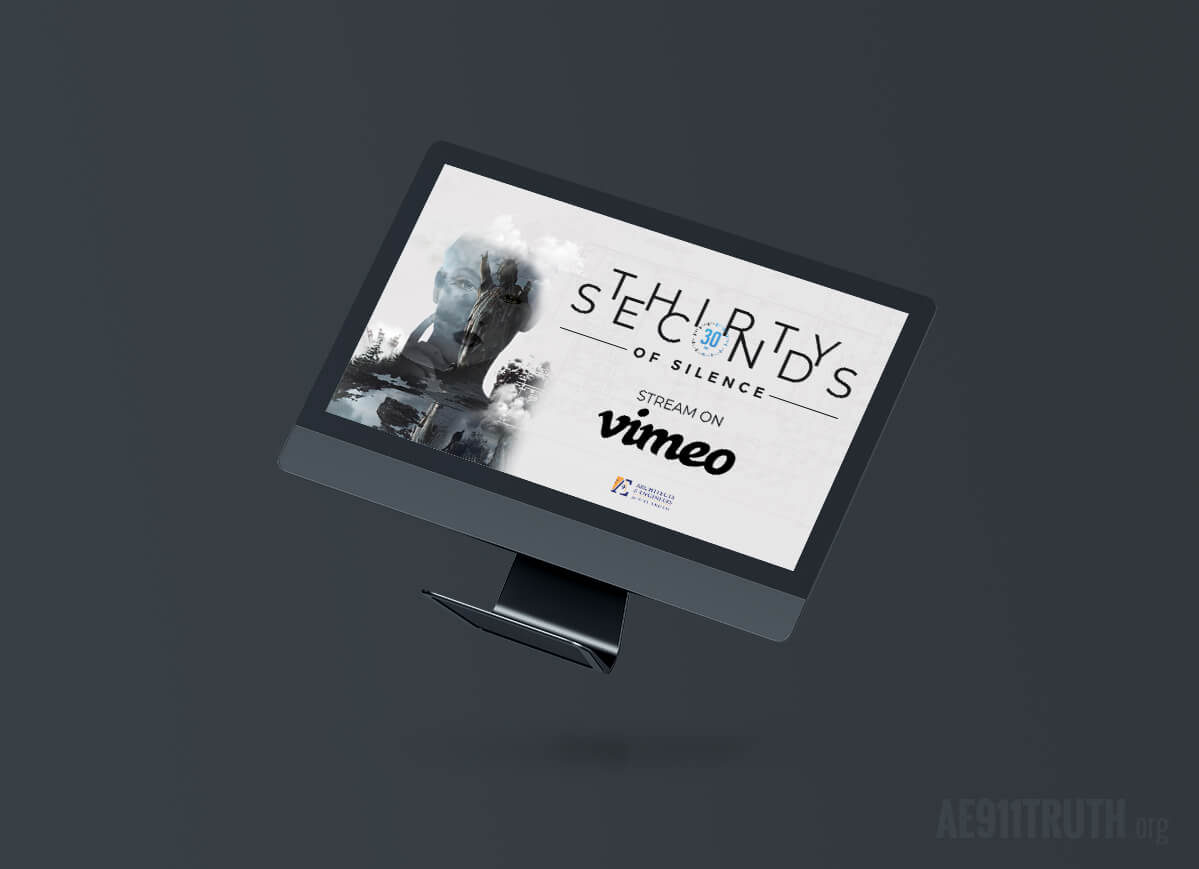The tactics evolve but the agenda remains the same.
Crush dissent. Silence speech. Discredit those who dare to question. And keep people from figuring out how they are being manipulated into going along with it all.
Establishment power – usually working through its propaganda arm, the “mainstream” media – loves to mock “conspiracy theorists.” It takes great delight in accusing them of being paranoid and delusional. The approach is about as subtle as a poke in the eye from one of the Three Stooges.
But the crazier the world gets, and the more often that “conspiracy theorists” get things right (which they do on a regular basis), the less effective this propaganda is. People have started to catch on.
To counter this awakening, the propaganda has had to evolve. In recent years, attacks on dissenters have become more extreme. Now, the idea is to convince people that anyone who dares question establishment power is not only mentally unstable but also “dangerous.” Merely questioning the activities of the powerful and their institutions is painted as being a threat to democracy, national security, and even human life.
The rhetoric becomes more insane every day. And the only way we can combat it is to see through it and to expose the psychological conditioning being used to justify restrictions on speech. The current “woke” agenda (including critical race theory and gender ideology) and the accompanying cancel culture are being used to increase contempt for free speech.
The real trick of this kind of psyop is to make the public demand more authoritarian control over what all of us do and think. Those who are fooled not only accept more censorship, more surveillance, and more propaganda, they clamor for it.
The disingenuous push to stop “hate speech” is just one more tactic being employed to convince the public that we must accept limits on what we say. And once we do, then the grip of control can be steadily tightened. The real trick of this kind of psyop is to make the public demand more authoritarian control over what all of us do and think. Those who are fooled not only accept more censorship, more surveillance, and more propaganda, they clamor for it.
Two years ago, this writer produced an article for AE911Truth under the title “Hundreds of articles dismissing ‘conspiracy theories’ read like they follow a single script.” I wrote in that piece that the same points, even the same words and phrases, come up in countless articles and other news reports, year after year. Despite the two-year gap, you may consider this article to be part 2 of what will be an ongoing series about how propaganda is used to suppress free speech – and particularly free speech about 9/11. You may wish to go back and read the original piece prior to reading this one, although that is not essential.
In that article, I explained the kind of tactics the establishment media use to marginalize “conspiracy theorists” and to discredit any challenges to official narratives:
“Challenges are written off as being “bizarre,” “outlandish,” “pernicious,” or any one of a host of other exaggerated descriptors that reveal extreme bias. We’re told that the theories in question are false and that they were debunked years ago, as if making the claim is enough — no evidence required. What is offered as evidence usually comes in the form of quotes from some academic or other who is said to be an “expert” in the “psychology of conspiracy theories. …The articles are too numerous, too similar, and too cartoonishly one-sided not to be intentional propaganda.”
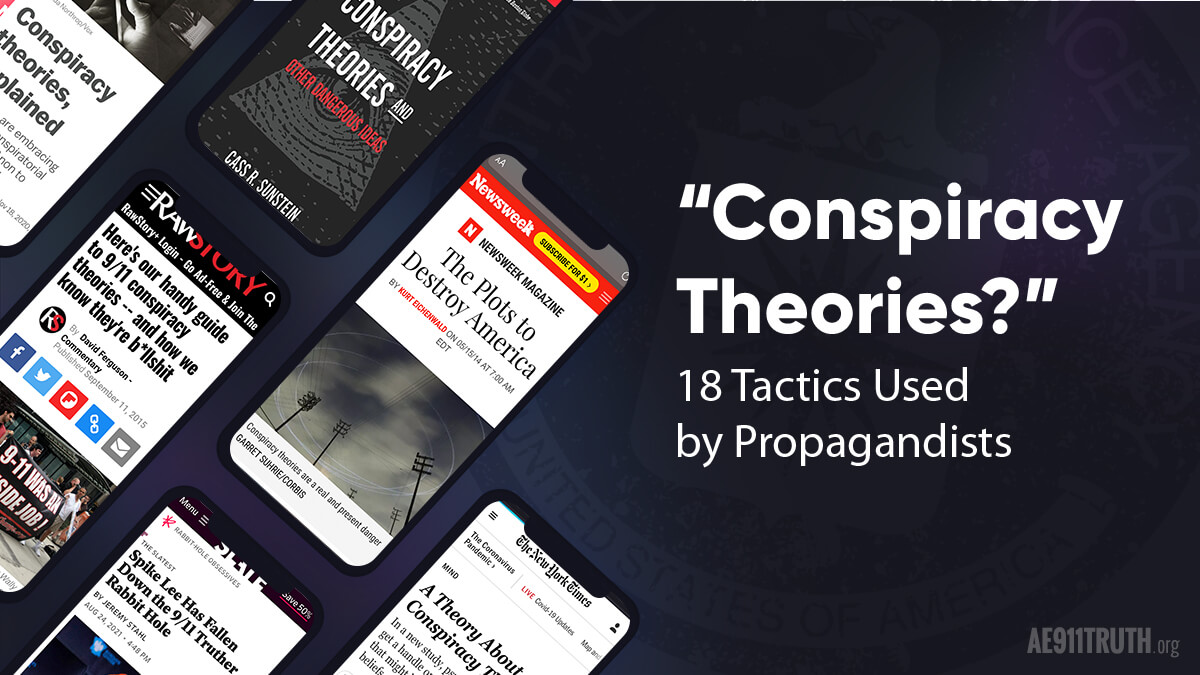
I identified 18 propaganda tactics that are regularly used in articles and news reports to denigrate anyone who dissents by slapping them with the "conspiracy theorist" label (This list as it appears in the original article includes additional explanatory notes about each tactic, so that’s a good reason to read the original article first.):
- Assert that something in a person's psychology makes them believe in conspiracy theories.
- Claim that conspiracy theorists are paranoid, irrational, and anti-science.
- Maintain that conspiracy theorists don't have evidence for their theories and they don't care about what the facts say. They just "believe" they are right even after their claims have been "disproven."
- Make bald assertions about "conspiracy theories" that are completely unsupported or just attributed to some academic who studies the "psychology" of conspiracy theories.
- Use the term "conspiracist" to be dismissive while seeming to be academic and authoritative but is really just dismissive.
- Attack "theories" using extreme and cartoonish descriptors (bizarre, pernicious, hooey, bogeyman).
- Impugn the motives of conspiracy theorists.
- Paint conspiracy theorists as fringe and/or "far right" and/or Trump supporters.
- Question why these "beliefs" persist after so many years.
- State as if it's a fact that certain theories are false and were debunked years ago.
- Lump strong, or at least plausible, theories with weak or easily discredited ones (or at least with theories that are perceived as having been discredited).
- "Debunk" the weakest or least credible points in "conspiracy theories."
- Make a theory sound false by giving a bogus, unfounded, or incomplete reason the conspirators would have engaged in the conspiracy.
- Dismiss any notion of government conspiracy on the grounds that government is much too incompetent to have been responsible for planning and executing a complicated event like 9/11.
- Begin articles by relating some supposed horror story where belief in one or more "conspiracy theories" by a person or group allegedly caused real harm.
- State that conspiracy theories are "dangerous" to democracy and to human health.
- Equate conspiracy theories with contagions.
- Link an explosion of conspiracy theories to the internet.
Interrupting the momentum
Conspiracy theory articles from around 2006, when 9/11 Truth seemed to be gaining traction, tended to be mocking and condescending more than harshly accusatory. An example is a New York Times piece under the headline “500 Conspiracy Buffs Meet to Seek the Truth of 9/11.” The author described the 9/11 truthers who attended the International Education and Strategy Conference for 9/11 Truth conference as “a society of skeptics and scientists who believe the government was complicit in the terrorist attacks.”
That’s far from the worst thing that most truthers have been called. And the article even showed a hint of sympathy for what truth activists go through:
“Like a prior generation of skeptics — those who doubted, say, the Warren Commission or the government's account of the Gulf of Tonkin attack — the 9/11 Truthers are dogged, at home and in the office, by friends and family who suspect that they may, in fact, be completely nuts.”
Unlike later media attacks on "conspiracy theories," some of these earlier pieces about 9/11 pay lip service to addressing "the evidence." A piece in Time, titled "Why the 9/11 Conspiracy Theories Won't Go Away," published on September 3, 2006, directs readers to "authoritative" sources like the 2005 NIST report and the NIST FAQs as if merely mentioning an official source is equal to “debunking” any challenges to that source.
Apparently, we can’t cope with the randomness of life so we scramble to impose structure on events. This, we’re told, is our way of feeling warm and comfy as we seek to make sense of the big scary world.
The article employs the common claim that conspiracy theories “just won’t go away,” as if the evidence being advanced in support of the official story should have ended the debate by now. This adds to the claim that “conspiracy theorists” stick to their “beliefs” long after they have been (supposedly) proven wrong. Often accompanying this idea is the claim that conspiracy theories have long ago been “debunked.” It’s as if asserting this makes it true. But it almost never is.
As with so many of these propaganda pieces, the Time article takes a stab at explaining the psychology of those who simply won’t accept what the media and their government have told them. Apparently, we can’t cope with the scary randomness of life so we scramble to impose structure on events. This, we’re told, is our way of feeling warm and comfy as we seek to make sense of the big scary world.
The article’s author, Lev Grossman, writes about the "problems" with conspiracy theories:
"The more you think about them, the more you realize how much they depend on circumstantial evidence, facts without analysis or documentation, quotes taken out of context and the scattered testimony of traumatized eyewitnesses."
Like so many dismissive claims about 9/11 truthers, this is the opposite of the truth. It is truthers who are providing facts, analysis, and documentation. It is truthers who are examining what eyewitnesses are saying. And it is truthers who are using evidence to draw their conclusions rather than relying on official propaganda and appeals to authority.
‘High priest of the nuts’
Just because some evidence is mentioned in these early articles doesn't mean the most extreme and mocking attacks aren't there right alongside it. In a 2006 piece in The Nation titled “The 9/11 Conspiracy Nuts,” the late Alexander Cockburn (whose bio described him as "one of America's best known radical journalists") took on "the fundamental idiocy of 9/11 conspiracy nuts," who he claimed have "combined to produce a ludicrous distraction." He described 9/11 researcher David Ray Griffin as the "high priest" of the nuts. (While the description of Cockburn as "radical" may have applied in other areas, his approach to "conspiracy theorists" was about as mainstream as you can get.)
As the years passed, actual evidence became less and less the focus of new attack pieces. Many were more general in scope, often dealing with 9/11 only in passing or not at all.
Slate magazine, ever on guard against dissenters and critical thinkers, sums up its point of view in a 2013 article under the headline "Conspiracy theorists aren't really skeptics: The fascinating psychology of people who know the real truth about JFK, UFOs, and 9/11":
"Conspiracy chatter was once dismissed as mental illness. But the prevalence of such belief, documented in surveys, has forced scholars to take it more seriously. Conspiracy theory psychology is becoming an empirical field with a broader mission: to understand why so many people embrace this way of interpreting history. As you’d expect, distrust turns out to be an important factor. But it’s not the kind of distrust that cultivates critical thinking.”
Newsweek published a feature in time for the 2014 anniversary under the headline "The Plots to Destroy America." It stood out because of how far it went in calling conspiracy theories "a clear and present danger" to society. This use of this theme has only intensified in the years since. By the way, “a clear and present danger” is defined by Merriam-Webster as: "a risk or threat to safety or other public interests that is serious and imminent, especially one that justifies limitation of a right (as freedom of speech or press) by the legislative or executive branch of government."
How much more obvious can the ultimate objective be? Freedom of speech itself is now being branded as a threat to ... well, freedom. (I guess if we truly want to keep our freedoms, we must let them fly away and then wait to see if they come back of their own accord...)
Also from this article:
"Conspiracy theories have been woven into the fabric of American society since before the signing of the Constitution. But what was once dismissed as the amusing ravings of the tin-foil-hat crowd has in recent years crossed a threshold, experts say, with delusions, fictions and lunacy now strangling government policies and creating national health risks."
National health risks… Where could that possibly lead?
Sunstein and Obama
The contention that “conspiracy theories” can be dangerous got a major boost from Obama appointee Cass Sunstein in his 2014 book Conspiracy Theories and Other Dangerous Ideas. I covered this in my recent article for AE911Truth on COINTELPRO. Sunstein’s book (and an earlier essay called “Conspiracy Theories,” which he co-wrote with Adrian Vermeule) may not have provided the first instance of conspiracy theories being called dangerous, but it certainly set the stage for what was to come.
And politicians have done their part to take advantage of the “conspiracy theory” label as a tool against “dangerous” dissent. We all remember George W. Bush’s famous phrase, "Let us not tolerate outrageous conspiracy theories concerning the attacks of September 11th." Well, that was tame compared to a 2022 speech by Barack Obama (You remember him – he used to be a community organizer) to the Stanford Cyber Policy Center.
Obama exhibited a keen awareness of the tactics, using several in less than a minute. He zeroed in on the "dangerous" nature of conspiracy theories while using guilt by association to equate a former Donald Trump advisor with Vladimir Putin, who is painted as evil incarnate these days. (Don't you hate those Putin price hikes?)
“People like Putin, and Steve Bannon for that matter, understand it’s not necessary for people to believe disinformation … You just have to flood a country’s public square with enough raw sewage.”
— The Recount (@therecount) April 21, 2022
— President Obama on how disinformation leads to people losing faith in democracy pic.twitter.com/mZvidysEB9
In true Orwellian fashion, Obama accused Russia of doing the very thing that he and the rest of the establishment figureheads have been doing relentlessly:
"People like Putin, and Steve Bannon for that matter, understand it's not necessary for people to believe this information in order to weaken democratic institutions," he said. "You just have to flood a country's public square with raw sewage – raise enough questions, spread enough dirt, plant enough conspiracy theorizing that citizens no longer know what to believe. Once they lose trust in their leaders, the mainstream media, in political institutions, in each other, in the possibility of truth, the game is won."
It's not the fact that their leaders and the media lie to them constantly that undermines trust. According to Obama, it's the Russians flooding the public square with raw sewage.
This statement is one of the best examples of projection I've ever seen. It's also a despicable lie, given how difficult it would be for any foreign leader to outdo American presidents of both major parties when it comes to subverting "democracy."
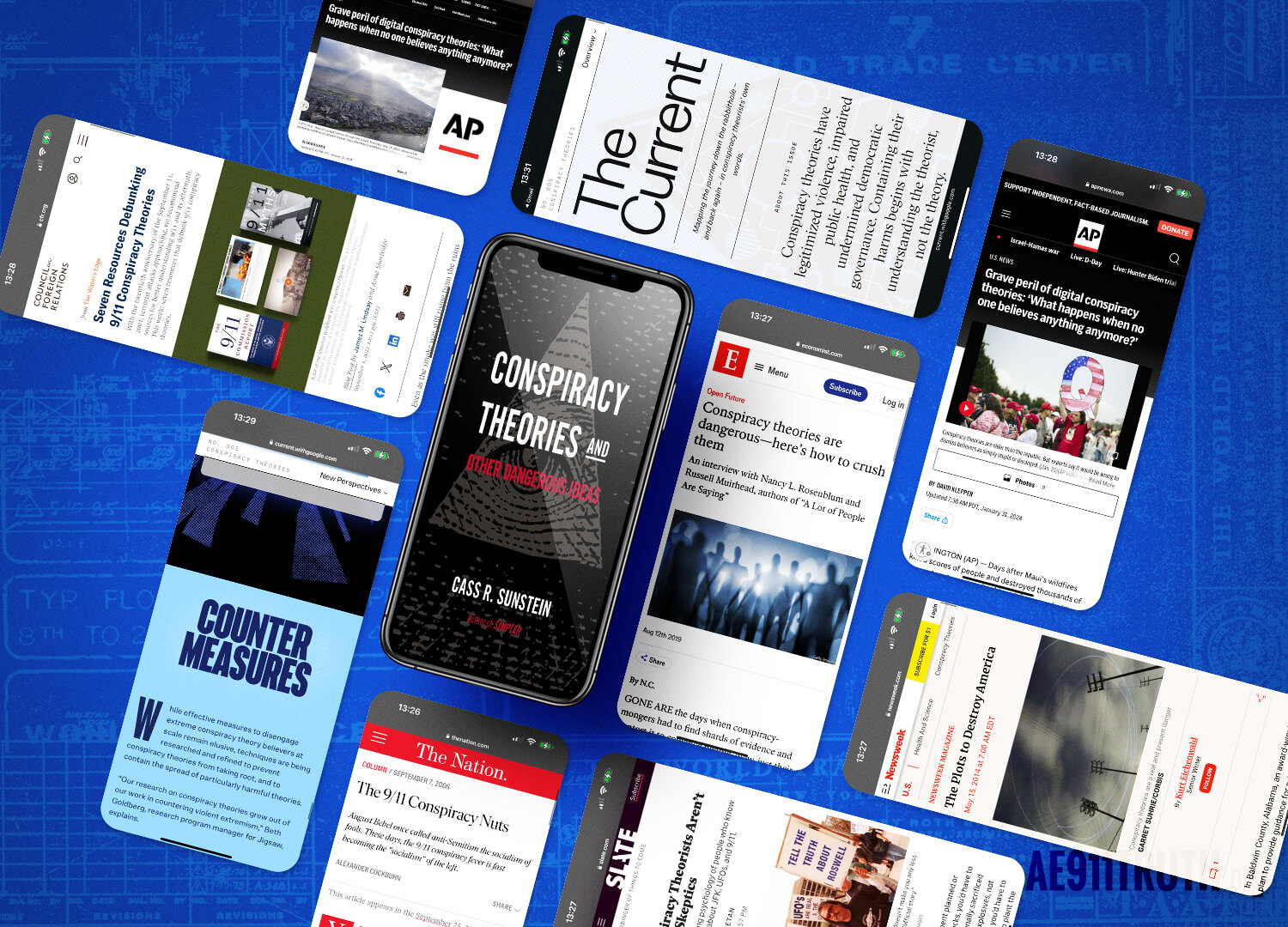
Here are just a few recent examples of media attempts to warn us about “dangerous speech”:
From The Economist in 2019:
“Conspiracy theories are dangerous—here’s how to crush them”
“GONE ARE the days when conspiracy-mongers had to find shards of evidence and contort it to convince people. Now, just their malevolence is needed. If a concocted scenario can’t be proved, then perhaps it can’t be disproved either. That is toxic for a stable society and politics. So how did we get here, and how do we get out?”
And another from AP News, January 31, 2024:
“Grave peril of digital conspiracy theories: ‘What happens when no one believes anything anymore?’”
“Extremists and authoritarians deploy disinformation as potent weapons used to recruit new followers and expand their reach, using fake video and photos to fool their followers. And even when they fail to convince people, the conspiracy theories embraced by these groups contribute to mounting distrust of authorities and democratic institutions, causing people to reject reliable sources of information while encouraging division and suspicion.”
Connecting “conspiracy theories” to QAnon is another “guilt by association” tactic, New York Times, August 2020:
“In 2019, the F.B.I. cited QAnon as one of the dangerous conspiracy theories posing domestic terrorist threats to the United States and cited past incitements of violence from its adherents. Despite its fringe origins, the conspiracy movement continues to grow in troubling ways.”
Getting in the act
It’s not just media that push this disgusting propaganda. Some of the most powerful institutions in the world have mirrored these hit pieces with article of their own on their own websites.
For example, the Council on Foreign Relations has this on its website:
“Seven Resources Debunking 9/11 Conspiracy Theories”
“Lots of writers have sought to explain the popularity of conspiracy theories, even when they are obviously absurd. Some conspiracy theories are harmless. It doesn’t really matter if people believe that the Apollo moon landings were shot on a Hollywood backlot. But the conspiracy theories that circulate about the 9/11 attacks are anything but harmless. They help to delegitimize democratic government. They demonize innocent groups that are falsely blamed. And they shift attention away from the real causes and perpetrators.”
A “unit” of Google called Jigsaw publishes The Current, which makes no attempt at objectivity (but then neither does Google’s algorithm). Here is its take on the subject at hand:
Under the heading “Legitimizing Violence”:
“Conspiracy theories loom large in the minds of violent extremists, playing a central role in extremist groups across ideologies, from the Islamic State to the Atomwaffen Division. Amongst extremists, conspiracy theories serve to demonize out-groups, foster a sense of victimization amongst in-groups, delegitimize dissent and moderation, and recast violence as necessary self-defense.”
Did you get that? It’s conspiracy theories that delegitimize dissent. Turns out that if we could just get rid of them, then people would be free to dissent.
The explosion of propaganda we've been subjected to over the past few years is shocking, even to those who were raising alarms about the growth of the surveillance state years ago.
While the "conspiracy theory" meme has encouraged many to dismiss challenges to official narratives unless they are anointed with "credibility" by the media, the explosion of propaganda we've been subjected to over the past few years – and the massive increase in censorship that has accompanied it – is shocking, even to those who were raising alarms about the growth of the surveillance state years ago.
For half a century we have had the message hammered into our brains that "conspiracy theorists" are paranoid kooks who should be ridiculed and/or ignored. In recent years, the fear has been ramped up, and "conspiracy theories" are being painted as dangerous to democracy and to physical health.
The real enemy isn't terrorism or Russia or “misinformation.” The enemy is you. And based on what has been written over the past two decades, this shouldn't surprise us at all.


